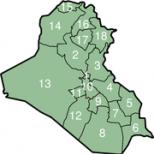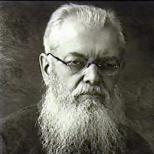Paired cross and ring rhymes. What is cross rhyme? Cross, pair, ring rhyme. Exact and approximate rhymes
Or to the stanza. However, I believe that it is worth highlighting them separately so that novice poets do not have a mess in their heads. Still, they relate more to the interior than to the internal one. Moreover, it is rhyme systems form the basis of the strophic structure of poetry.
Graphically, rhyming systems are represented as follows: aabb, abab, ababvv etc. Letter symbols represent rhymes. This is very useful for understanding the rhyme scheme of a particular poem. For example, the rhyme scheme of I. Annensky’s “Autumn Romance” can be written as follows: abab:
I look at you indifferently - and
But I can’t stop the longing in my heart... - b
Today it’s oppressively stuffy, and
But the sun is hidden in the smoke. – b
The most common rhyme schemes(there are three of them) have their own names:
– Adjacent (also called sequential or parallel) - rhyming, adjacent verses: the first with the second, the third with the quarter (aabb). This is the most obvious rhyming system and has been especially popular throughout time. Almost all rhymed epics are written using a contiguous rhyme system. The famous poem “Mtsyri” by M.Yu. was written in the same verses. Lermontov. An example from the work of Sergei Yesenin:
The scarlet light of dawn was woven on the lake,
On the forest, wood grouse are crying with ringing sounds.
An oriole is crying somewhere, burying itself in a hollow.
Only I don’t cry – my soul is light.
It seems to be enjoyed adjacent rhymes– as simple as shelling pears, but this feeling is deceptive. A short line, which is most often used in adjacent rhyming, the proximity of rhyming lines requires the poet to master the technique. He needs not only to choose the rhyme as accurately as possible ( imprecise rhymes, as a rule, do not sound), but also to formulate your thought in the small space of the line so that it does not sound artificial.
– Ring (encircling or enveloping) - rhyme the first verse with the fourth, the second with the third (abba):
There are subtle power connections
Between the contour and the smell of a flower.
So the diamond is invisible to us until
Under the edges it will not come to life in a diamond.
V. Bryusov. Sonnet to Form
A somewhat more complex rhyme system than the adjacent one. The second and third rhyming lines slightly obscure the rhyme of the first and fourth lines, “smearing” it. But such a rhyming system is very convenient to use, for example, when describing conflicting feelings, since the second and third lines seem to be spoken quickly and have more pronounced dynamics than the first and fourth encircling rhymes.
– Cross - rhyme the first verse with the third, the second with the fourth (abab). The most popular and most rhythmically flexible rhyming system. It is somewhat more complex than poems with adjacent rhymes, but simpler than those with a ring rhyme. There are many examples of such a rhyme system. One of them is the textbook Tyutchev quatrain:
I love the storm in early May,
When the first thunder of spring
As if frolicking and playing,
Rumbling in the blue sky.
– Some literary scholars also highlight interlaced (or mixed) rhyme system. This is the general name for all other rhyme systems (for example, the Onegin stanza) and their modifications, as well as sonnets and other solid forms. For example, the scheme of the English sonnet is as follows: abab vgvg dede zhzh, a variant of the French sonnet: abba abba vvg ddg, the scheme of rubai - aaba, etc.
Violanta for my misfortune
The sonnet was ordered, and with it there was trouble:
there are fourteen lines in it, according to the docs
(of which, it’s true, three are already in a row).
What if I can’t find the exact rhyme,
composing the lines in the second quatrain!
And yet, no matter how cruel the quatrains are,
Lord knows I get along with them!
And here comes the first terzetto!
A wire is inappropriate in a terzetto,
wait, where is he? The cold is gone!
Second terzetto, twelfth line.
And thirteen times were born into the world -
then there are now fourteen of them all, period!
Lope de Vega. Sonnet about a sonnet
Rhyme scheme of this sonnet is: Abba Abba VGV GVG.
Many people try to write poetry in their youth. Some even continue to “suffer” from this in adulthood, imagining themselves as a modern Pushkin - a talented and unsurpassed poet. But, unfortunately, not always what comes from the pen of nuggets can be called real poetry. Even if we do not take into account the content of verses, the brightness of poetic images, then often technical side The work leaves much to be desired.
Versification technique
Important conditions for the technique of versification are meter (rhythm) and rhyme. Despite the fact that today there are a lot of subcultures where the regularity and rhythm of lines are ignored when composing poetry, even they cannot completely abandon rhymes. An example of this today is the fashionable youth movement called rap: youth is looking for its own ways of expressing the inner world. For those who develop new trends in the art of poetry, and for those who are fans of the classical direction in poetry, today it is so important to know what rhymes are in the Russian language.
Cross rhyme
Most poems are written in such a way that the first and third lines, as well as the second and fourth, rhyme in pairs. If, when analyzing a stanza, you connect rhyming words with arcs, then the following fact will catch your eye: the arcs will intersect, as if forming a cross. That is why this phenomenon is called “cross rhyme”. The verse entitled “Reflections on the Seashore” will help, using an example, to more carefully consider this method of versification.

Reflections on the seashore
It wasn’t me, it was the seagulls that were crying,
And said goodbye to the past summer,
The bright distances were not calling me...
The sea whispered answers to them
How can you survive, restless?
How not to see lies and falsehood in everything?
To understand the soul, littered
Trash of pain, resentment and doubt?
How to avoid mistakes
And out of a thousand hundred decisions
Can you find the correct, precise answer?”
But, tired of sobbing, they fell silent
Seagulls. The sea fell asleep.
And the answers are like needles in hay,
Can't be found unless it's God's grace.

Male, female, dactylic and hyperdactylic rhyme: general information
Here, each quatrain (a stanza consisting of four lines) uses cross rhyme. Most often, poets write all quatrains in one particular poem using one of several, either all lines end on stressed syllables (masculine rhyme), or all lines have a feminine rhyme when the stress falls on the penultimate syllable, or one of the rhymed pairs of lines has a masculine rhyme, and the other pair - female. Slightly less common dactylic rhyme, when the line ends on two unstressed syllables preceded by a stressed one. And it is very rare to find a hyperdactylic (four- or even five-syllable) rhyme, when a stressed syllable is followed by three or more unstressed syllables. The use of all variants at once in one poem is quite rare.
Male, female, dactylic and hyperdactylic rhyme: analysis using an example
In the previously presented example, masculine, feminine and dactylic cross rhyme can be traced as a variant of the method of versification. For example, in the first and last quatrains the use of exclusively female rhymes is observed, and in the second stanza the first and third lines are connected by a female rhyme, and the second and third by a dactylic one. The third quatrain is an example of the use of the combination female-male rhyme. In fact, here the cross rhyme is expressed by the AbAb scheme, where it represents a feminine rhyme, and the lowercase rhyme represents a masculine one.

Ring rhyme
It occurs as often as cross rhyme, encircling rhyme of lines. With this method of versification, the first line is combined with the fourth line, and the second line is combined with the third. As an example of encircling, or in other words, ring rhyme, you can use this stanza from the poem “About Mom”:
I will kiss the wrinkled hands...
They never knew boredom
As can be seen from the example, rhyme can be traced here in the first and fourth lines (a little - remained), as well as in the second and third (hands - boredom).
Just like cross rhyme, ring rhyme can have masculine, feminine, dactylic and hyperdactylic variants, as well as their combinations. Most often this type of versification is used in sonnets and almost never in Russian folk poetry. It first appeared in the 18th century, at the end of the syllabic period of versification. You can observe it in “Letter II to your poems.”
Paired rhyme in children's poetry
When discussing methods of composing poetry, one cannot fail to mention paired rhyme. Just like ring and cross rhyme, paired rhyme is observed quite often in Russian poetry. This is probably the simplest, most understandable and accessible view poems, it’s not for nothing that most of them are written in this way poetic works for children. This includes tongue twisters, counting rhymes, and many riddles.
For example, such riddles in poetry are written in pair rhymes:
He is a hot steamer, floating on matter.
And behind it there is such a smooth surface - not a wrinkle can be seen!
Long ears and a short tail,
He lives in a cage, fluffy and timid.
The famous poem about Tanya dropping a ball into the river, authored by Agnia Barto, demonstrates the use of paired rhyme. And other poems, for example, about a bull who lay down on his side to sleep in a box, a sleepy bear who lay down in bed, and about an elephant who does not want to sleep, nods his head and sends greetings to his elephant.

Onegin stanza
Usually the poet writes the entire work in one key chosen by him, using either a ring, or a pair, or a cross rhyme. But Alexander Sergeevich Pushkin presented the world with an original version, which in his honor was called the “Onegin stanza”, as it appeared in the first lines of the novel “Eugene Onegin”. The Onegin stanza consists of three quatrains and a final couplet. Here, in one poem, ring rhyme, paired rhyme, and cross rhyme are found all at once. This method is still alive today, and sometimes authors of poetic works turn to it in order to more clearly express their feelings and thoughts.
As an example, we can take the entire poem “About Mom,” one quatrain of which has already been considered as an example of encircling rhyme.

About mom
I haven’t forgotten why I’m home,
I haven’t forgotten the smell of my home.
Mom, I bought you roses!
Mommy, I'm sorry it's late...
What can I do? Just this little bit:
I will kiss the wrinkled hands...
They never knew boredom
They had no strength left to rest.
And the eyes, once bright blue,
They look from the photo - faded blue...
Hair, luxurious, beautiful,
Thinned out, turned grey...
You were waiting for me here, at the threshold -
I'm just a little late...
When analyzing the first quatrain, it becomes clear that paired rhyme is involved in its writing. However, it should also be noted that an assonant rhyme is used here, in which only the consonants are consonant but not the consonants.
Indeed, at first glance it is quite difficult to call the words “home” and “native” a rhyme. But in the word “at home” the last unstressed vowel is in the second weak position, therefore it gives a reduced sound “ъ”. In the word “native” the same sound is produced by the letter “o” in the post-accented position. The words “roses” and “late” can be parsed in a similar way. True, this rhyme is enhanced by the common consonant “z”.
The second quatrain was discussed above: here we can trace a girdle or ring rhyme. The third quatrain uses cross rhyme. And finishes Onegin stanza, as required by the chosen style, couplet.
This is such a difficult thing - writing poetry. And yet, even a robot can be taught to choose the right rhymes, choose a method of versification, and observe a rhythmic pattern. But putting a piece of your soul into a work is not something everyone can do.
In the section on the question: Please give examples of cross-enveloping rhyme from familiar poems asked by the author Realize the best answer is PARALLEL rhyme - the first and second, third and fourth lines rhyme. This rhyme is also called adjacent, paired. Let us remember the famous poem by Agnia Barto:
Our Tanya cries loudly:
Dropped a ball into the river...
Hush, Tanechka, don’t cry:
The ball will not drown in the river. .
CROSS rhyme - the first and third, second and fourth lines rhyme:
The lonely sail is white
In the blue sea fog.
What is he looking for in a distant country?
What did he throw in his native land?
(M. Yu. Lermontov).
This method of rhyming is the most common in Russian poetry.
Wrapping rhyme - the first and fourth, second and third lines rhyme:
Make noise, make noise from a steep peak,
Don't be silent, gray stream!
Connect a long howl
With a lingering review of the valley.
(E. A. Baratynsky).
From a parallel rhyme you can make a cross or encircling rhyme and vice versa.
more details here...
See rhyme...
rhyme- (from the Greek rhythmos proportionality) the consonance of the ends of verses (or hemistiches), marking their boundaries and connecting them with each other. Rubric: structure of a poetic work Whole: sound organization of a verse Type: poor rhyme, rich rhyme … Terminological dictionary-thesaurus on literary criticism
rhyme- (from the Greek rhythmos proportionality) the same or similar sound of the ends of two or more poetic lines, marking their boundaries and connecting them with each other (for example, in an excerpt from the poem by V.V. Mayakovsky: Poetry // the same mining of radium.… … Dictionary of literary terms
rhyme- y, w. Consonance of word endings, starting with the last stressed syllable, ending poetic lines or parts of lines. Cross rhyme. Verb rhyme. □ He composed sonnets, even though sometimes he struggled with the rhyme for an hour. Lermontov, Sashka. ◊ women's... ... Small academic dictionary
cross- oh, oh. 1. Located at an angle, crossing something crosswise. [Selifan], turning right onto the first cross road, set off at a gallop. Gogol, Dead Souls. Yu Yu, recognizing our steps from a distance, ran out to meet us at the third crossroad... ... Small academic dictionary
CROSS- CROSS, cross, cross. 1. Intersecting, located cross to cross. Cross brace (tech.). Cross rhyme (through a line; lit.). 2. Coming into being, occurring from several sides at once, crossing, counter.… … Dictionary Ushakova
KATREN- (French quatrain, from quatre four), quatrain, stanza of four lines. The rhyme system in K.: abab (cross rhyme), aabb (paired), abba (encircling). In Persian poetry (rubai) and in imitations of it, the form aaba is used, ... ...
poem- poetry. add(#song). rhyme poetic consonance; repetition of sounds connecting the endings of two or more lines (male #. female #. dactylic #. paired #. cross #. enveloping #). rhyme rhyme, sya. rhyme. punning rhyme... ... Ideographic Dictionary of the Russian Language
MUSTEZAD- MUSTEZAD, a form of classical verse in the poetry of the peoples of the Near and Middle East and Central Asia. In M. long lines (14 or more syllables) alternate with short ones (6 syllables). The number of lines in a stanza is from 2 to 10 pairs of long and short. In M.,... ... Literary encyclopedic dictionary
The concepts of rhyme and rhyming should be differentiated. If the first is the consonance of the endings of two words, then the second represents the order of alternation of rhymes in the verse. Accordingly, rhyme is a broader concept than rhyme.
Types of rhymes
In versification they rely on several types of rhymes. Thus, according to the quality and quantity of matches of syllables, rhymes are usually divided into accurate and inaccurate. According to the specificity of the stress - masculine (stress on the last feminine sound (stress on the penultimate vowel sound), dactylic and hyperdactylic (stress on the 3rd and 4th vowel sound from the end). If the lines, in addition to the vowel, coincide in the pre-stress (support) then such a rhyme is defined as rich. If this is not the case, the rhyme is called poor.
Types of rhyme
There are three main types of rhyming in versification:
- adjacent (pair room),
- cross (alternating),
- ring (encircling, enveloping).
Also separate species represents free rhyme.
The adjacent (paired) type implies alternate consonance of adjacent lines - the first line rhymes with the second, the third, respectively, with the fourth, the fifth with the sixth, etc. All types of rhyme in a poem can be conventionally designated in the form of a diagram. Thus, an adjacent species is designated as “aabb”. Example:
“Only there is no rubbish these days (a) -
The light(s) are made differently.
And the harmonica sings (b),
That the freemen disappeared (b).”
(S. A. Yesenin).
A special case of adjacent rhyme is the alternation of rhymes according to the “aaaa” pattern.
Cross (alternating) rhyme is formed by alternating rhyming lines - the first rhymes with the third, the second with the fourth, the fifth with the seventh, etc. rhyming "abab":
“I remember a wonderful moment:
You appeared before me (b),
Like a fleeting vision(s),
Like a genius of pure beauty (b)"
(A.S. Pushkin).
The ring (encircling, enveloping) type of rhyme is built according to the “abba” scheme. Accordingly, the first and fourth lines, as well as the second and third, rhyme. This type of versification is less common than the previous two:
“We are not drunk, we seem to be sober (eh)
And, probably, we really are poets (b).
When, sprinkling strange sonnets (b),
We speak with time using “you” (a).
(I. A. Brodsky).

Free types of rhyme occur when there is no pattern in the alternation of rhymes:
“A horse thief was sneaking through the fence,
The grapes were covered in tan,
Sparrows pecked at the brushes (b),
They nodded the sleeveless stuffed animals (in),
But, interrupting the rustle of the grapes (b),
Some kind of rumble was tormenting” (c).
(B. L. Pasternak).

Accordingly, in this example, the types of rhyme are combined: the first and second lines are adjacent, and the third to sixth lines are cross.
Rhyme and whole stanza
A complete stanza implies the presence of at least one pair for each rhyme. This ensures the indivisibility of the overall body of a given stanza - it cannot be divided into smaller integral stanzas that have their own completed rhyme.
Depending on the number of rhymes forming a verse, the forms of monostich, distich, terzetto, quatrain, pentet, etc. are distinguished. Monostich cannot be a whole stanza, since one line does not rhyme with anything (even if it contains an internal rhyme). The distich is built according to the “aa” pattern, having, accordingly, one rhyme for the whole stanza. Also, the terzetto has one rhyme scheme - the “aaa” scheme. In this case, the terzetto cannot be divided, since with any division we get at least one monostych, which is not a whole stanza.
The quatrain includes such types of rhyme as ring rhyme ("abba") and cross rhyme ("abab"). In the case of adjacent rhyme (“aabb”), the verse is divided into two independent distichs, each of which will be an entire stanza. The pentet, in turn, combines six rhymes of an entire stanza.
Free and free verse
It is necessary to distinguish between the free form of rhyme and the free form of verse, since they are not the same thing. Free types of rhyme in a poem are formed by the so-called. free verse is a form of versification with changing types of rhyme. That is, the lines rhyme in different orders. Free verse (aka white), in principle, does not use rhyme:
“Listen!
After all, if the stars light up (b) -
So does anyone need this?
So someone wants them to be (d)?”
(V.V. Mayakovsky).

At the same time, free verse cannot be equated to prose according to the principle: since there is no rhyme, then how does it differ from, for example, an ordinary newspaper advertisement? One of the differences from prose is the tendency towards recitation, which distinguishes a poetic text from a prose text. This tendency is created due to the specific emotionality, the special mood of the poetic text, which does not accept monotonous reading. The second significant difference between free verse is its rhythm, which is formed due to a certain alignment of the number of syllables and stresses.





